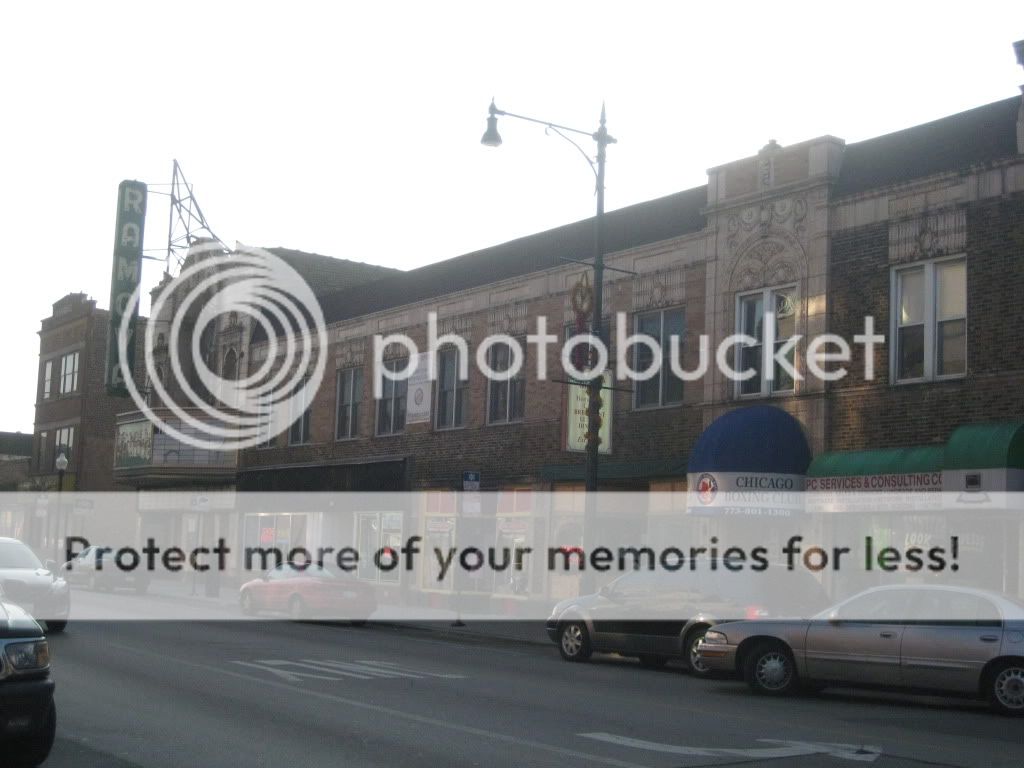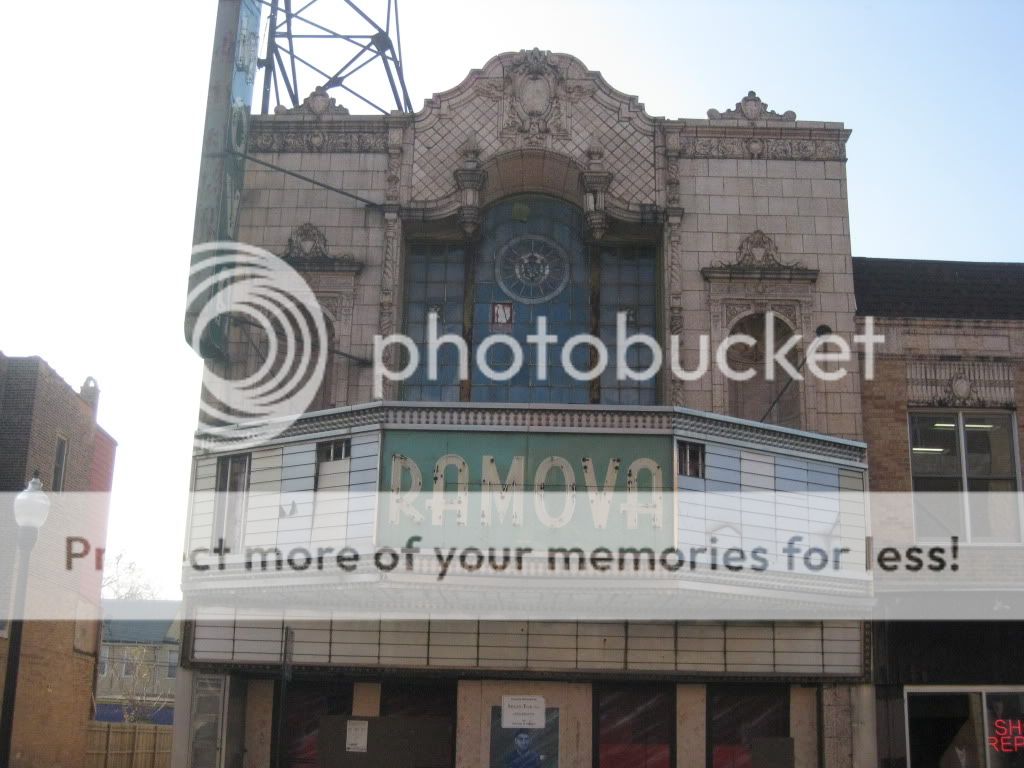One of my current projects is to help evaluate the National Register nomination that is being developed for the Ramova Theater in the Bridgeport neighborhood, located just south of the intersection of 35th & Halsted. Because it is on the south side of Chicago, despite its relative wealth and the tourist draw that being home of the White Sox provides, the neighborhood has been unable to attract significant development to adaptively reuse the theater. Opened in 1929 and designed in an effusive Spanish Revival theme, the theater is very similar to the Music Box Theatre on the north side, which has seen quite fruitful reuse. Built as a movie theater, the auditorium is part of a mixed-use building. The bottom floor along Halsted is restaurants, including the long-lived Ramova Grill whose chili has a great reputation (and is quite yummy!) and the second floor houses apartments. These auxiliary uses remain in full operation, but the auditorium has been abandoned since the mid-1980s. At some soon before its abandonment, all the original seating was replaced with cheap plastic seats, but its elaborate ornamentation remains intact, though worse for the wear.
The lobby includes a double-sided staircase with sweeping railings and elaborate windows that glimpse into the spaces beyond. Sadly, one side of the lobby has been mostly obliterated from an unknown force. The auditorium is decorated to resemble an open-air Spanish courtyard and remains essentially intact, including the original air conditioning system which fed through holes in the floor. The twinkling stars painted on the ceiling of the auditorium, not unlike Grand Central Station in New York City, make the Ramova one of the last standing atmospheric theaters in the city. Like any abandoned building, the Ramova's biggest enemy is water. The auditorium and lobby are covered in fallen plaster and penetration continues, worsening the problem. The building has needed a new roof for several years, though it has been patched at times. Since the building is currently owned by the city of Chicago, maintenance has not been all that could be hoped for.
The exterior facade contains a beautiful terra cotta parapet and its centerpiece is a tall window in front of the entrance lobby. Often noticed is the theater's massive sign and marquee. The vertical sign is not the original, but it is quite old, having been added in the 1950s in a blast of neon glory. "Ramova" means "peaceful peace" in Lithuanian, a naming choice that gives a good sense of the character of the neighborhood when the theater was built. Originally a working class community centered around the Chicago River, Bridgeport housed several phases of immigrants, from Czechs and Swedes in the early days, to Irish, Italians, and Lithuanians by the 1920s. It was a neighborhood institution and quite successful for six decades. And it is apparently still quite loved. It has its own preservation group, Save the Ramova, which is still quite active and dedicated to the cause five years after its founding.
Thursday, April 15, 2010
Posted by Posted by
The Loosh
at
8:32 PM
Categories:
Subscribe to:
Post Comments (Atom)





0 comments:
Post a Comment